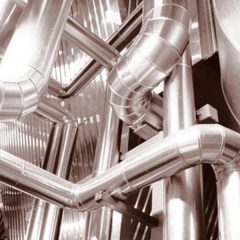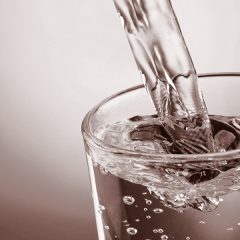AGRICULTURE
Agriculture accounts for 70% of global water withdrawal from our entire supply of fresh water. The UN predicts agriculture to remain biggest user of water into the middle of this century.

Agriculture accounts for 70% of global water withdrawal from our entire supply of fresh water. The UN predicts agriculture to remain biggest user of water into the middle of this century.

Water use by industry accounts for 20% of global withdrawals from freshwater supplies, and is dominated by energy production and manufacturing. Energy production alone accounts for 75%.

In less than 10 years, 1.8 billion people will be living in countries or regions with absolute water scarcity, and two-thirds of the world’s population could be living under water-stressed conditions.
It typically takes 3,000 – 5,000 liters of water to produce 1 kg of rice, 2,000 liters for 1kg of soya, 900 liters for 1kg of wheat and 500 liters for 1kg of potatoes. The world is facing a water crisis. It is estimated that over 2 billion people are affected by water shortages in over 40 countries, and the extensive withdrawal of water for agriculture from the river, lakes, and aquifers results in limited supplies for other human needs, such as drinking, washing, cooking, and sanitation. According to the UN World Water Development Report, the average supply of water per person will drop by a third in the next two decades [source].
According to FAO, Agriculture must provide this increase against the decreasing availability of and competition for land and water from other uses, whether non food crops, urbanization or industrial development [source].
To produce more nutritious food with less water: Innovative technologies are required to ensure a greener and more sustainable food production. They are needed to improve crop yields; implement efficient irrigation strategies; reuse of drainage water and use of water resources of marginal quality; produce smarter ways to use fertilizer and water; improve crop protection; reduce post-harvest losses; and create more sustainable livestock and marine production [source].
According to The United Nations World Water Development Report 2018, Water use by industry, which account for roughly 20% of global withdrawals, is dominated by energy production, which is responsible for approximately 75%, with the remaining 25% of industrial water withdrawals being used for manufacturing (WWAP, 2014) [source].
According to United Nation, by 2025, 1.8 billion people will be living in countries or regions with absolute water scarcity, and two-thirds of the world’s population could be living under water stressed conditions [source].
Domestic water use, which roughly accounts for10% of global water withdrawals, is expected to increase significantly over the 2010–2050 period in nearly all regions of the world. The United Nations World Water Development Report [source].
The ecosystems on which life itself is based – our food security, energy sustainability, public health, jobs, cities – are all at risk because of how water is managed today [source].
In less than 10 years, 1.8 billion people will be living in countries or regions with absolute water scarcity, and two-thirds of the world’s population could be living under water-stressed conditions.
2.1 billion People lack access to safely managed drinking water services. (WHO/UNICEF 2017)
Water scarcity already affects four out of every 10 people. (WHO)
80% of wastewater flows back into the ecosystem without being treated or reused (UNESCO, 2017).
Many contaminants that pose known human health risks are regulated by the United States Environmental Protection Agency (EPA). EPA makes sure that water meets certain standards, so you can be sure that high levels of contaminants are not in your water.
According to a new NRDC report, nearly 77 million Americans got drinking water from systems that violated federal protections in 2015, and more than a third of this number relied on systems that did not comply with standards put in place to protect health. Millions of other Americans’ water suppliers failed to test water safety properly or didn’t report test results to health authorities or customers—potentially sweeping many more health risks under the rug.
There are three major types of contaminants that can pollute the water:
Physical contaminants primarily impact the physical appearance or other physical properties of water. Examples of physical contaminants are sediment or organic material suspended in the water.
Chemical contaminants are elements or compounds. These contaminants may be naturally occurring or man-made. Examples of chemical contaminants include nitrogen, bleach, salts, pesticides, metals, toxins produced by bacteria, and human or animal drugs.
Biological contaminants are organisms in water. They are also referred to as microbes or microbiological contaminants. Examples of biological or microbial contaminants include bacteria, viruses, protozoan, and parasites.
There can be many sources of contamination of our water systems. Here is a list of the most common sources of contaminants:
Naturally occurring chemicals and minerals (for example, arsenic, radon, uranium)
Local land use practices (fertilizers, pesticides, livestock, concentrated animal feeding operations)
Manufacturing processes.
Sewer overflows.
Malfunctioning wastewater treatment systems (for example, nearby septic systems).
In the US, the bathroom is the largest consumer of indoor water. More than 47% of water use in the average American home occurs in the bathroom, the toilet alone can use 27 percent of household water. Almost every activity or daily routine that happens in the home, bathroom uses a large quantity of water. For example:
Older toilets use between 3.5 and 7 gallons of water per flush. A leaky toilet can waste about 200 gallons of water every day.
A bathroom faucet generally runs at 2 gallons of water per minute. By turning off the tap while brushing your teeth or shaving, a person can save more than 200 gallons of water per month.
Use efficient flushing toilets to avoid excesses waste of clean water. It takes about 70 gallons of water to fill a bathtub, so showers are generally the more water-efficient way to bath. Nearly 22% of indoor home water use comes from doing laundry. Save water by making sure to adjust the settings on your machine to the proper load size.
Worldwide, infectious diseases such as waterborne diseases are the number one killer of children under five years old and more people die from unsafe water annually than from all forms of violence, including war. (WHO 2002)
“Access to and use of water is a key issue which we address when supporting rural women to realize joint economic initiatives to improve the livelihoods of their families.”
According to UN organization, with the existing climate change scenario, almost half the world’s population will be living in areas of high water stress by 2030, including between 75 million and 250 million people in Africa. In addition, water scarcity in some arid and semi-arid places will displace between 24 million and 700 million people.